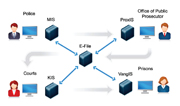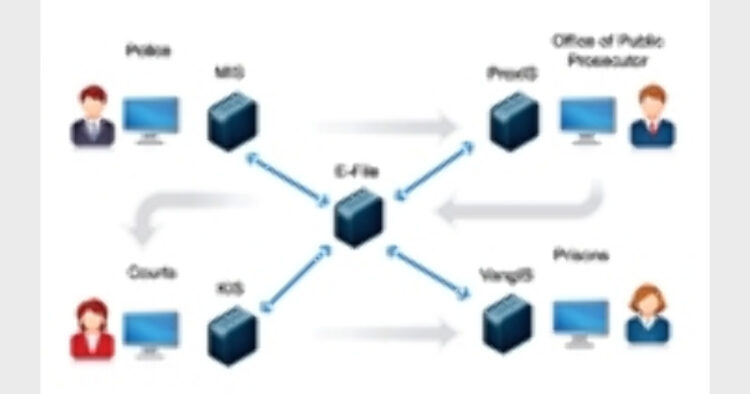e-Governance and Connectivity on the Fast-Track?
Intro: An integral part of e-Office software, e-File system has great scope for improving efficiency as each and every action taken on the file gets recorded electronically. And the record of any action once undertaken cannot be deleted or removed. ?
 The process of making government offices efficient and transparent through the introduction of e-Office software, which will minimise the use of paper and files, has been put on the fast track by the Narendra Modi government. The Cabinet Secretariat has issued instructions to ministries to phase out their paper work by adopting e-Office software, which is designed by National Informatics Centre (NIC).
The process of making government offices efficient and transparent through the introduction of e-Office software, which will minimise the use of paper and files, has been put on the fast track by the Narendra Modi government. The Cabinet Secretariat has issued instructions to ministries to phase out their paper work by adopting e-Office software, which is designed by National Informatics Centre (NIC).
Currently officials in certain departments are being trained in the use of e-File system. An integral part of the e-Office software suite, e-File is a file tracking system for scanning, registering and routing the inward correspondence attachment, draft for approvals and movement of files as well as receipts. The State governments can start sending proposals and other documents to the Central government departments through the e-File system once all aspects of the system are in place.
The e-File system has great scope for improving efficiency as each and every action taken on the file gets recorded electronically. And the record of any action once undertaken cannot be deleted or removed. The system can be used for diarisation of inward receipts, creation of files, movement of receipts and files and finally the archival of records. There is overall improvement in the decision making process as all the information concerning any file becomes available at a single point.
However, e-Governance cannot be successful only with the digitisation of government offices, we also have to ensure that the departments and the pubic are connected through high-speed broadband. According to reports, the Department of Telecom (DoT) is expected to finalise a National Broadband Policy within 100 days. It is also possible that the DoT would recommend treating high-speed Internet access as a basic right like education and health. Under the new policy the government could include broadband among basic necessities like education and health and work towards new legislation of Right to Broadband.
There is no denying the importance of broadband, not just for e-Governance, but for management of almost every aspect of life. But does that warrant making broadband a “right”? Lets not forget how the UPA government floundered badly when it took the rights based approach for development of education, healthcare, jobs and other critical sectors. Proliferation of broadband is something that is best left to the markets; the Modi government should confine itself to ensuring that there is healthy a policy environment for enabling the private telecom and broadband companies to do their work in the country.
According to the data from TRAI, there were about 61 million broadband subscribers at the end of March, 2014. Of these, 14.86 million subscribed broadband through fixed line and 46 million used wireless connection like dongles, mobile phone and other devices. While the Internet penetration in India is 17 per cent, in China it is 42.3 per cent and for USA it is 81 per cent. Clearly India has a long way to go in this area.
The failure of broadband to reach all parts of the country is also because at present there are different departments governing various technologies. The Cable TV comes under the Ministry of Information and Broadcasting and Satellite related issues are mostly governed by the Department of Space. While the telecom companies come under the Department of Telecom. A better synergy will have to be developed between the different departments for an effective broadband policy to be developed. -Anoop Verma?














Comments